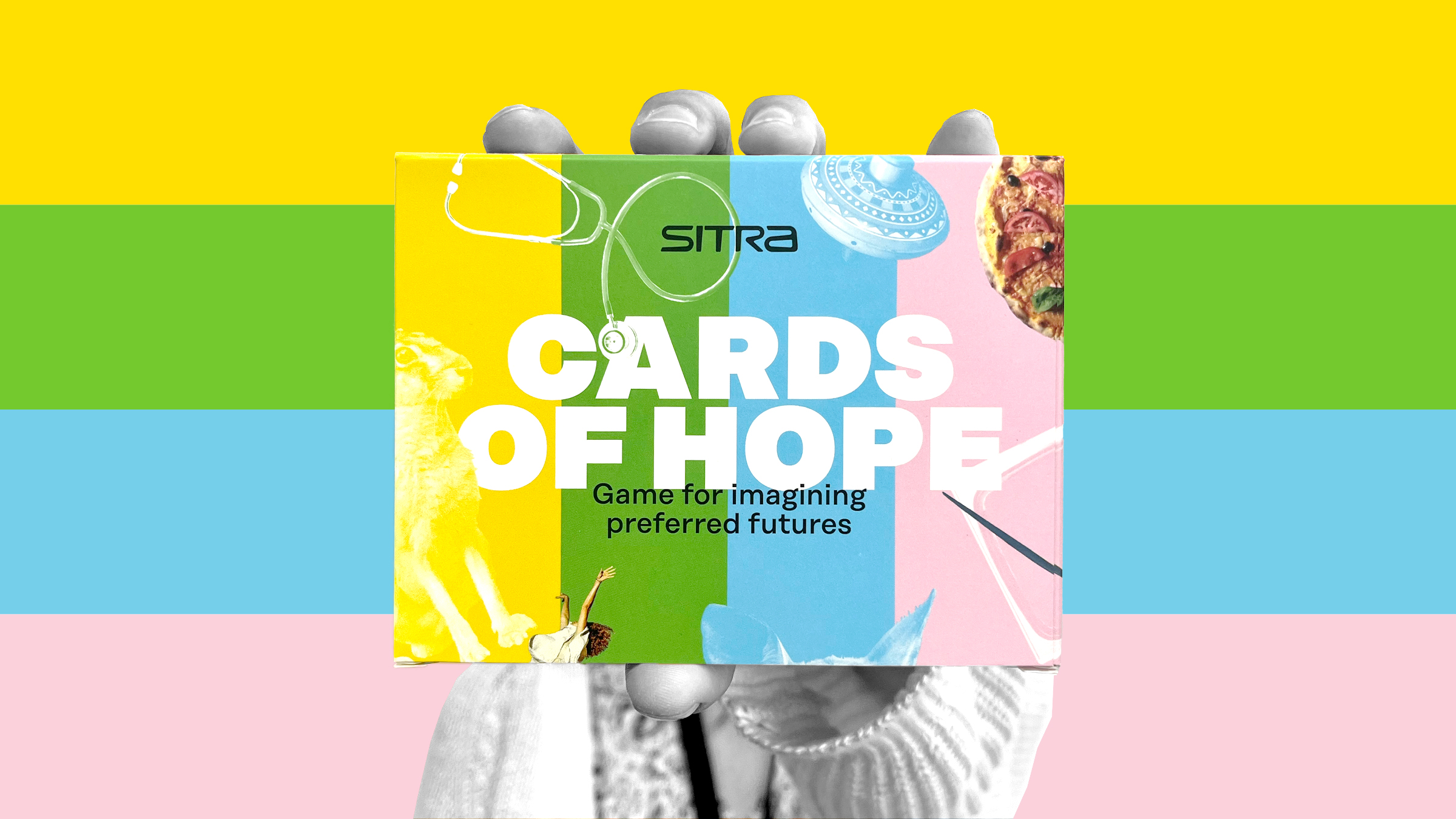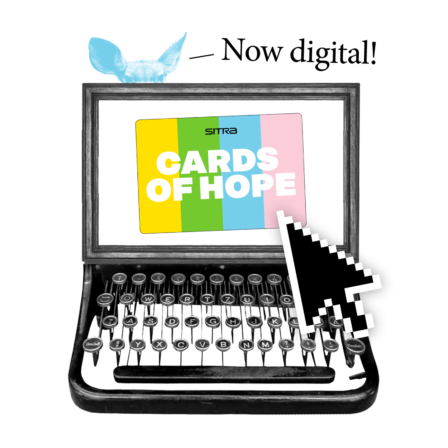Cards of Hope is intended for everyone interested in developing their skills in imagining different futures and thereby becoming better future-oriented thinkers. The game does not require any advance skills, a certain educational background or expertise.
“The idea of the game started from the question of how to make future-oriented thinking easier to approach to everyone? The aim is to lower the threshold of getting excited by future-oriented thinking and thereby promoting it, so that people would increasingly think about the future and be involved in future-oriented discussions,” say the developers of the game, Sitra’s Terhi Ylikoski and Liisa Poussa.
Lowering the threshold of future-oriented thinking is important because we are facing a huge systemic change into a more sustainable society. This increasingly requires us to have the ability to challenge and broaden our notions of what the future could be like. In addition, we need hope and hopefulness that incite action.
Dreaming about a good future is not easy for anyone in our time, especially not for the young. According to Unicef’s survey last year, more than 70 per cent of Finnish youth believe that they and future generations will have to suffer due to climate change. Therefore, Cards of Hope games were sent in 2022 to all Finnish-language upper secondary schools, vocational education institutions, universities of applied sciences and university of applied sciences libraries.
Try playing the digital version of Cards of Hope
The game provides materials for imagination
The idea of the game is simple: the participants are given “cards of hope” from which they have to develop a vision of a better tomorrow. As the name suggests, the cards guide towards thinking about good futures, and this is not always easy.
“Playing the game creates a safe environment for imagining futures, one where people are allowed to flex their imagining muscles and envision even a bit more surprising futures. Instead of dystopias, the game steers thoughts towards preferred futures,” Ylikoski says.
The deck of cards includes different kinds of cards. The theme card gives the them to review in the vision, while the situation card anchors the vision to a specific situation or place. Temporal distance, or the time card, encourages thinking about what if things were completely different from now. These materials are always exactly the same for all players. In addition, the players blindly pick a perspective card from the deck. It encourages the players to think about the futures empathically, in the shoes of someone else. Are we thinking about a better future from the perspective of a senior citizen, political decision-maker or a paperless migrant, for example? This way, the same materials result in different visions in the discussion, and the game helps to perceive the tensions between different images of the future. After all, the future does not look the same from everyone’s point of view.
“The card game is easy, meaning that anyone can use the cards, it emphasises hopefulness and is playful and stimulating – the cards do not give ready-cut answers but inspire discussion about futures,” Liisa Poussa says.
When and where to deal out Cards of Hope?
The game was initially developed for adults, but based on the test groups of the development phase, the game worked well for upper comprehensive school pupils as well. The glossary of the game cards, which is partly derived from the UN’s Sustainable Development Goals, might not work very well as such for younger children, but the game can naturally be adapted for even younger age groups.
In the test phase, the game was subjected to as diverse target groups as possible: it was played by upper secondary school and vocational students, municipal decision-makers, NGO developers, experts at communications agencies and foresight professionals, among others. Certain experiences were common among the test subjects’ feedback: playing the game was fun and mind-broadening, it inspired thoughts and discussion and tuned the players into imagining futures. On the other hand, many people also noticed how difficult it was to imagine preferred futures at first. As one player put it: “During the game, visions began to emerge faster, so even during a short game we noticed that you can really build up hopefulness muscles with use!”
The game comes with instructions on how it can be played. However, these instructions are just the starting point – already in the testing phase, it quickly turned out that many players began to boldly create new ways of using the cards.
In upper secondary schools and vocational education institutions, the game was approached without prejudice in the testing phase, and the cards formed the basis of diverse future-oriented discussions and sustainable development-related news headlines. The cards can in fact be used diversely in teaching and student counselling. At upper secondary schools, the game can be used as a concrete tools for promoting extensive general knowledge or sustainable future in accordance with the upper secondary school curriculum. In the best case, the cards get young people to really jump in – participants of a vocational education institution’s entrepreneurship course who tested the game would have wanted to spend the rest of the course discussing visions of the future.
The Cards of Hope are not a direct tool for organisational development or crystallising a vision. However, the cards can be used for encouraging and warming up thinking in connection with such processes as well. At the beginning of a strategy workshop or a workplace recreation day, for example, the cards can be used for getting rid of the constraints of the present and give rise to joint brainstorming and creativity.
A less serious use of the cards would be a workshop’s introduction tour: everyone picks a theme and situation of their choice from the cards and tells others their own vision of the future when introducing themselves. On the other hand, you can even spend an entire evening with your colleagues around the game and its enticing visions of the future.
There are many possibilities. Based on the feedback received in the testing phase, good uses for the game can be found in the following contexts:
- workplace development days
- coffee breaks
- friends’ game night
- at home with family
- co-workers’ weekend resort at a cottage
- active NGO members’ meeting
- sustainable development lesson at a vocational education institution
- student counselling in an upper comprehensive school
Interested? Order Cards of Hope here (please notice that we send cards only to Finland) or use digital cards anywhere, anytime.




Recommended
Have some more.
Cards of Hope